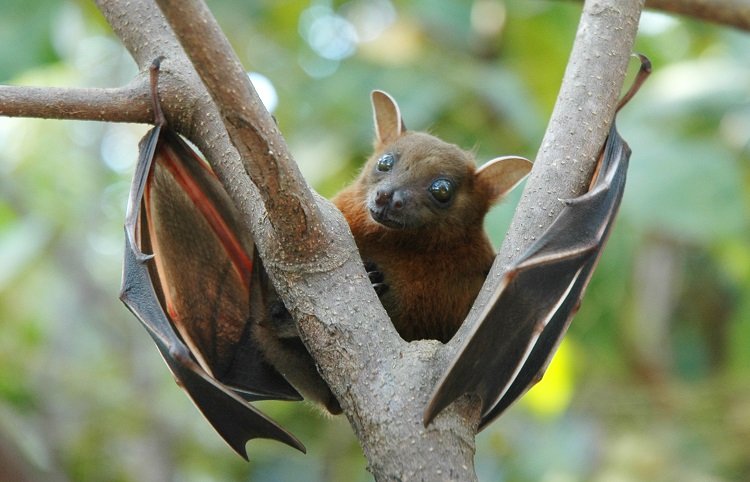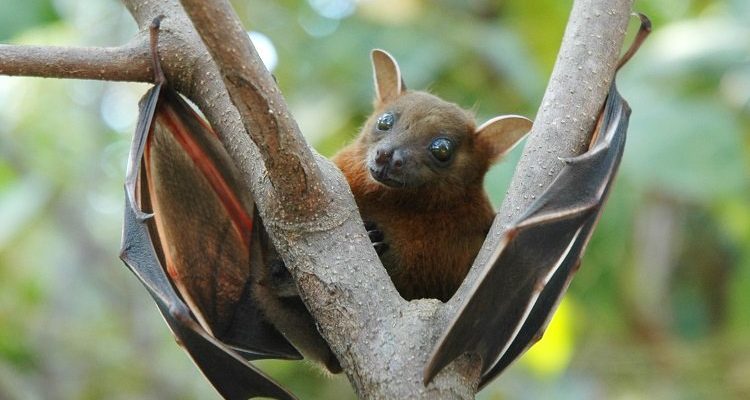
Fruit bats, also known as flying foxes, bring a whole different vibe to bat lore. Instead of being seen as spooky or creepy, they’re often celebrated for their vital role in nature, such as pollinating flowers and dispersing seeds. That’s pretty impressive! Let’s dive deeper into the world of fruit bats and explore how they’ve been represented in culture and folklore. You might find some surprises along the way.
Fruit Bats in Ancient Beliefs
In many ancient cultures, fruit bats held significant symbolic meanings. For example, in some African traditions, these bats are seen as symbols of abundance and fertility. The connection lies mainly in how they help spread seeds and pollinate fruit-bearing plants, directly contributing to the growth of food sources. This service to the environment paints them as caregivers of the land, much like a nurturing mother.
In Asian cultures, particularly in Chinese mythology, fruit bats often symbolize good luck and happiness. You might see them featured in artwork, where they are sometimes depicted alongside peaches, which also represent longevity and prosperity. It’s a beautiful blend of nature and spirituality that reflects how humans have long connected the dots between the animal kingdom and their own lives.
Interestingly, these beliefs haven’t just faded away with time. Many modern interpretations still honor this connection. For instance, festivals celebrating harvests can sometimes involve rituals honoring fruit bats, highlighting their contribution to agriculture. Here’s the thing: these bats are more than just creatures of the night; they symbolize the vitality of nature itself, weaving through the fabric of our histories.
Folklore and Legends featuring Fruit Bats
When it comes to folklore, fruit bats have inspired various tales, some fascinating and others downright quirky. For example, in certain indigenous cultures in Australia, there are stories that depict fruit bats as wise beings. They are often portrayed as mentors to young animals, teaching them how to survive in the wild. This portrayal emphasizes the respect and admiration these cultures have for their natural environment, where every creature has a role to play.
In other regions, tales warn of the consequences of disturbing fruit bat habitats. These narratives frequently serve as cautionary tales to educate communities about the importance of coexisting with wildlife. When confronted with the mysterious antics of fruit bats in the dark, locals might tell children stories about the little bat that helps or hinders depending on how humans treat its home. It’s a clever way to teach respect for the environment.
The interesting part is how these stories evolve over time, often reflecting broader societal values. Where fruit bats were once feared for their night-time activities, now they can be celebrated as heroes in folklore—showing us how our perceptions can shift dramatically.
Fruit Bats in Art and Literature
Artistic representations of fruit bats often capture their unique features and enchanting presence. In many cultures, you might find paintings or sculptures that highlight their large wings and expressive faces. These artworks not only celebrate the beauty of fruit bats but also remind us of their ecological importance.
In literature, fruit bats pop up in various forms. They might be characters in children’s books, teaching valuable lessons about friendship and cooperation. Think about a story where a little fruit bat helps her forest friends find food. That sort of narrative can resonate with young readers, encouraging a love for wildlife and an understanding of nature’s balance.
Moreover, poets and writers often use fruit bats as metaphors. Their nocturnal activities and essential roles in ecosystems create a rich backdrop for themes of transformation, community, and coexistence. When you read about them in poems or stories, it’s like these bats are whispering secrets about the interconnectedness of life.
Modern Symbolism of Fruit Bats
Fast forward to today, and fruit bats are finding new symbolic meanings in our increasingly urban world. As cities expand, the plight of these creatures often represents broader environmental issues, such as habitat destruction and climate change. Activists use the image of fruit bats to advocate for conservation efforts, highlighting their role as a critical species in maintaining biodiversity.
In popular culture, fruit bats can sometimes be seen as quirky mascots, representing sustainability and eco-friendliness. Brands focused on environmental awareness might incorporate fruit bats into their marketing, showing that these creatures are not just to be feared but admired. This shift in perspective is a testament to how powerful storytelling can be in changing lives and communities.
You might even see fruit bat art becoming trendy among younger generations as a way to express love for the planet. This growing appreciation ties back to the ancient beliefs that celebrated their role in nature, reminding us that we’re starting to reconnect with these vital creatures.
Fruit Bats in Folktales Around the World
Every culture has its own tales, and fruit bats have certainly found their way into many of them. From the Caribbean to Southeast Asia, these bats are often mentioned in stories that explain natural phenomena. For instance, in some Caribbean folk tales, fruit bats are seen as the guardians of fruit trees, ensuring that the harvest is plentiful and protecting them from harm.
In contrast, some stories from Southeast Asia depict fruit bats as tricksters. These tales often highlight their mischievous behavior while also teaching valuable lessons about humility and kindness. It’s fascinating how these narratives can serve dual purposes: entertainment and moral education.
Overall, these folktales remind us of the bond between humans and fruit bats. They serve as cultural touchstones that help explain our relationship with wildlife while also providing a rich tapestry of stories passed down through generations. Honestly, who knew fruit bats could be so multi-faceted?
The Role of Fruit Bats in Today’s Ecological Conversations
As we navigate discussions about the environment, fruit bats are often brought up as examples of the balance needed in our ecosystems. Their roles in pollination and seed dispersal make them crucial to sustaining various plant species. Without them, we might see a decline in fruit trees and, consequently, the animals and humans who rely on those resources.
This conversation about fruit bats is essential, particularly as global warming and habitat destruction threaten their populations. Conservationists are working hard to raise awareness, emphasizing that protecting these remarkable creatures is vital for a healthy ecosystem. If we lose fruit bats, we don’t just lose a fascinating animal; we risk damaging entire ecological systems that have thrived for centuries.
You might be wondering how you can help. Engaging in local conservation efforts, spreading awareness in your community, or even just learning more about these creatures can make a difference. It all starts with understanding their importance.
Fruit bats are so much more than spooky night flyers. Their representation across cultures and folklore tells a rich story about our connection to nature. From ancient beliefs that celebrate their contributions to modern narratives that advocate for their conservation, fruit bats remind us of the delicate balance in our ecosystems.
By appreciating the role these bats play in our world, we can start to see them as symbols of hope and resilience rather than fear. Whether you’re reading about them in folklore, seeing them in art, or learning about their ecological importance, fruit bats have a lot to teach us.
So, the next time you think about bats, consider the fruit bat and its legacy. They’ve been part of our stories for centuries, and they deserve our respect and protection. Together, let’s embrace the fruit bat’s role in culture and work towards a future where they continue to thrive.

